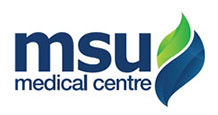Be Alert with Heat Stroke
To prevent unintended incidents, it is advised that the public be vigilant for the early signs of heatstroke, particularly in children and the elderly.
A heat stroke is defined as a potentially fatal condition marked by a core body temperature that is higher than 40°C and central nervous system dysfunction that causes delirium, convulsions, or coma.
Heat-related illnesses can range in severity from mild to severe as shown in the table below.
| Severity | Types | Definition |
| Mild | Heat edema | A self-limiting process that appears when exposed to a hot environment and is characterized by mild swelling of the hands, ankles, and feet. |
| Mild | Prickly heat | Small, raised, itchy rash that appears in places where sweat collects. |
| Mild | Heat cramps | Painful muscle spasms that occur due to dehydration and loss of nutrients from excessive sweating. Heat cramps are most common in the abdomen, back, arms, or legs. |
| Mild | Heat syncope | Heat syncope is a fainting (syncope) episode or dizziness due to dehydration and lack of acclimatization. |
| Mild | Heat exhaustion | Heat exhaustion is the body’s response to an excessive loss of water and salt, usually through excessive sweating. |
| Major | Heat stroke | A potentially fatal condition marked by a fever that reaches 40°C or higher and central nervous system dysfunction that causes delirium, convulsions, or coma. |
Source: Centers of Disease Control Prevention, 13 May 2022.
Climate change or hot weather conditions are something that we cannot prevent. Therefore, it is recommended to avoid exposure to heat. If you need to go out, take precautions such as using an umbrella and suitable clothing.
The heat illnesses signs and symptoms are varied from each other. Let's examine the table shown.
| Heat related illness | First Aid Action |
| Heat stroke |
|
| Heat exhaustion |
|
| Heat syncope |
|
| Heat cramps |
|
| Prickly heat |
|
Source: Centers of Disease Control Prevention, 13 May 2022.
Climate change or hot weather conditions are something that we cannot prevent. Therefore, it is recommended to avoid exposure to heat. If you need to go out, take precautions such as using an umbrella and suitable clothing

